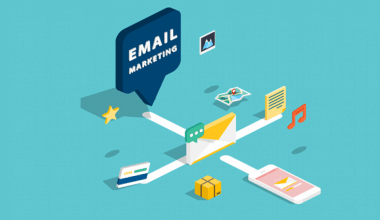So you already have that best product in the market and you’ve done all the campaigns you could. However, customers seem not to be coming by as expected. A good acquaintance with the types of market segmentation might just be all you need to make your business bubble. So, let’s take a walk through all the specifics you need to know on this subject.
Overview
Market segmentation aims at dividing your potential customers with similar needs and preferences into similar subgroups. The bottom line of this is that with a deep understanding of market segmentation and its types, a business owner can present a product or service to his customers and be almost 100% certain that they are going to buy it. Now, this is not some abracadabra in action, but some logical and proven modus operandi that works wonders.
A major step in the segmentation process is selecting a suitable base. This aims at yielding segments with maximum internal homogeneity that are meaningful for the specific market problem or situation. Let’s get our head around this by taking a look at the characteristics and different types of market segmentation.
How Do You Identify a Market Segment?
Identifying the market based on their needs and desires. Analyze their usage habit, preferences, way of life, and demographics. Consider the development potential of your market as well as that of your competitors and the risk they may pose to your business. Analyze the earning potential of the market sector.
Is Marketing a 4P or 5P?
Yes, strategic positioning in the marketplace is achieved by the integration of the “5 P’s of Marketing”: product, price, promotion, place, and people.
Characteristics of Market Segmentation
A good thinking approach and a basic understanding of the market to be segmented are important in selecting the type of market segmentation. For example, data showing the family size of people in a certain place is of no use to a shampoo seller, but a contraceptive company will find this invaluable. So, a good market segment should be identifiable, substantial, accessible, responsive, actionable, and stable.
#1. Identifiability:
This is the ability of a business to identify distinct groups within the marketplace. It is perhaps your compass when compared to other types of market segmentation because you need to know the people your product is meant for before any other thing.
#2. Substantiality:
The segment has to be large enough or have a high purchasing power to make the business profitable. If not the business will have a hard time trying to establish itself in the market.
#3. Accessibility
The targeted segment should be able to access the business. So, through every possible means, social media, etc a company should stay in touch with its segment.
#4. Responsiveness:
How will consumers in the segment respond to marketing offers targeted at them? Your market segment should respond adequately enough to your product. If possible let your market segmentation be so good that your product becomes an essential part of the daily life of your customers.
#5. Actionable:
The segment should be able to provide guidance in marketing decisions. So this means the segment controls your action in the market.
#6. Stability:
The stability of the segment has to be long enough to enable adequate profitability of the business.
The above list, which are the characteristics of good market segmentation, will serve as a good basis for the selection of a type of market segmentation for your business. So you don’t hawk female jewelry in a male hostel.
READ ALSO: DEMARKETING, ALL YOU NEED TO KNOW (+CASE STUDY)
What Is Basis of Market Segmentation?
Age, gender, education, income, employment, marital status, family size, family life cycle, religion, nationality, and social class provide the basis for segmentation. The market is segmented based on a single variable or a combination of various variables.
Who Uses Market Segmentation?
They consist of senior living communities whose marketing efforts target those aged 65 or older and their adult children. Despite diversifying to reach atypical market niches, luxury automakers continue to target high-income customers.
Types of Market Segmentation
These six major types of market segmentation: demographic, geographic, psychographic, behavioral, need-based, and transactional, will help you in creating a good market segment for your business.
#1. Demographic:
For a business-to-customer context, the following attributes could be considered: Age, gender, education, occupation, income, and socioeconomic status. A jewelry store will find the income attribute handy in their segmentation.
#2. Geographic:
Have you ever tried to access a website and they tell you that users from your location are not allowed to access the site? Well, that’s an example of geographic segmentation. The attributes of this type are the continent, country, state/region, and city. But different avenues within a city are known to show interest in a specific kind of business. Like a city might be the business hub of a state but not all avenues within the city are markets some might show good interest in entertainment.
#3. Psychographic:
These segments are based on personality. So you need to know the kind of person your customers are in terms of their interests, attitudes, values, and lifestyle. Are they socially aware, active ‘club going’ youths, conservatives, traditionalists, etc? I once saw a Youtube video about a Chinese billionaire who spends $400 on a meal when I showed my friend, he asked what kind of cockroach will worth $400? A business selling only Chinese dishes in Nigeria will find it difficult to thrive cos these guys don’t value it.
#4. Behavioural:
This divides your audience based on their previous behavior towards your brand. These attributes can be considered for this segment: Usage level, previous purchase, purchase patterns, product knowledge, and product rating. A restaurant might want to segment their customers based on the meals mostly ordered for (purchase patterns). So this causes dynamism in their menu as it will be updated based on customers’ order patterns.
#5. Needs-based:
This group of customers is based on their needs. Categories of needs under this type of market segmentation are problem-solving needs, emotional needs, and functional needs. For example, data on potential customers with celiac disease will help a food manufacturing company segment the audience with the need for gluten-free products appropriately.
#6. Transactional segmentation:
This type of market segmentation groups customers based on spending patterns. Use the RFM (Recency, Frequency, Monetary) model to group these guys. So a footwear store that wants to re-engage their loyal customers who haven’t visited them in 6 months and segment them based on their RFM behavior at the end, might want to target customers who visit often but spends small and customers who visit less frequently but spends a lot in their promotions.
Why Is Segmentation Important?
Market segmentation facilitates the company’s advertising strategy. It allows businesses to focus on niche markets rather than trying to appeal to the masses. As a result, marketers may save time, money, and other assets.
What Are the 3 Segmentation Strategies?
There are three main ways to go about segmenting: by firmographics, by behavior, and by needs.
Is 4PS a Market Segmentation?
Yes, Neal Borden invented the concept in 1964. These 4 Ps should assist you in determining whose attention you wish to capture. Product, Price, Location, and Marketing.
READ ALSO: 30 MOST SEARCHED CUSTOMER SERVICE SKILLS (FULL DETAILS)
Levels of market segmentation
Every level of market segmentation requires a different marketing approach. Therefore, every marketer should have a good understanding of these levels, how to address them, and how they work. These levels of market segmentation are Global, Niche, Localized, and Individual.
#1. Global:
It’s a broad level of market segmentation because it contains general information about the audience. For instance age, income, and country. So it’s not broken down in any way.
#2. Niche:
A niche is a group of consumers that prefer the same product. The global market segment contains a niche. For example, if you sell adult male shoes, your global market will target men >17 years. Within this global segment, you have niches of consumers interested in black shoes, brown shoes, etc.
#3. Localized:
Moving down from the niche you find where your consumers are localized. For example, you might find that a lot of people living in a particular avenue are under the black shoe niche. So, you can localize customers by using this avenue. This helps you create more of your brand’s black shoe billboards on that avenue.
#4. Individuals:
This final level of market segmentation deals with consumer habits. Because it’s concerned with collecting data from customers which helps in placing them in any of the levels above.
Having gone through the levels of market segmentation, let’s move further to the benefits of market segmentation.
Benefits of Market Segmentation
I talked a lot about the characteristics, types, and levels of market segmentation, you must have figured out one or two benefits of market segmentation. However, the exclusion of a subheading attributed solely to the benefits of market segmentation is gonna be like an employer explaining the job specifications of a job to their employee and skipping the profit part. So, here are the top benefits of market segmentation:
#1. Realization of market opportunities:
A good study of the needs of a segment can find out a low level of satisfaction from the present offering of a competitor. So this will present an opportunity for the business owner.
#2. Developing marketing programs:
A clear insight into the response-ability of a specific market segment will help a company develop nice marketing programs.
#3. Proper marketing appeals:
A company, instead of creating a marketing campaign aimed at all potential buyers can create different marketing campaigns aimed at the needs of different customers.
#4. Appropriate media choice of advertisement:
Another benefit of market segmentation is this. You can transfer funds to the appropriate media which has more potential of getting to the segment of choice.
#5. Efficient use of resources:
Segmentation will help a retailer direct funds to products that are more likely to be purchased by their most profitable segment. So this helps to efficiently and effectively manage funds.
#6. Better service to customers:
Proper market segmentation can facilitate customer satisfaction and this increases their chance of coming back for more. So kinda a positive feedback mechanism.
#7. Logical price fixation:
This benefit of market segmentation helps to fix the prices of goods and services. For example, the price for low-income groups has to be lower and product and promotion campaigns adjusted appropriately.
Types of Market Segmentation FAQs
What are the types of customers in marketing?
- New customers.
- Impulse customers.
- Angry customers.
- Insistent customers.
- Loyal customers.
What are segmentation methods?
- Geographic Segmentation
- Demographic Segmentation
- Psychographic Segmentation
- Behavioral Segmentation
What are segmentation tools?
By grouping users and timing actions, a segmentation tool enables you to present the appropriate content to the appropriate user at the appropriate moment.





